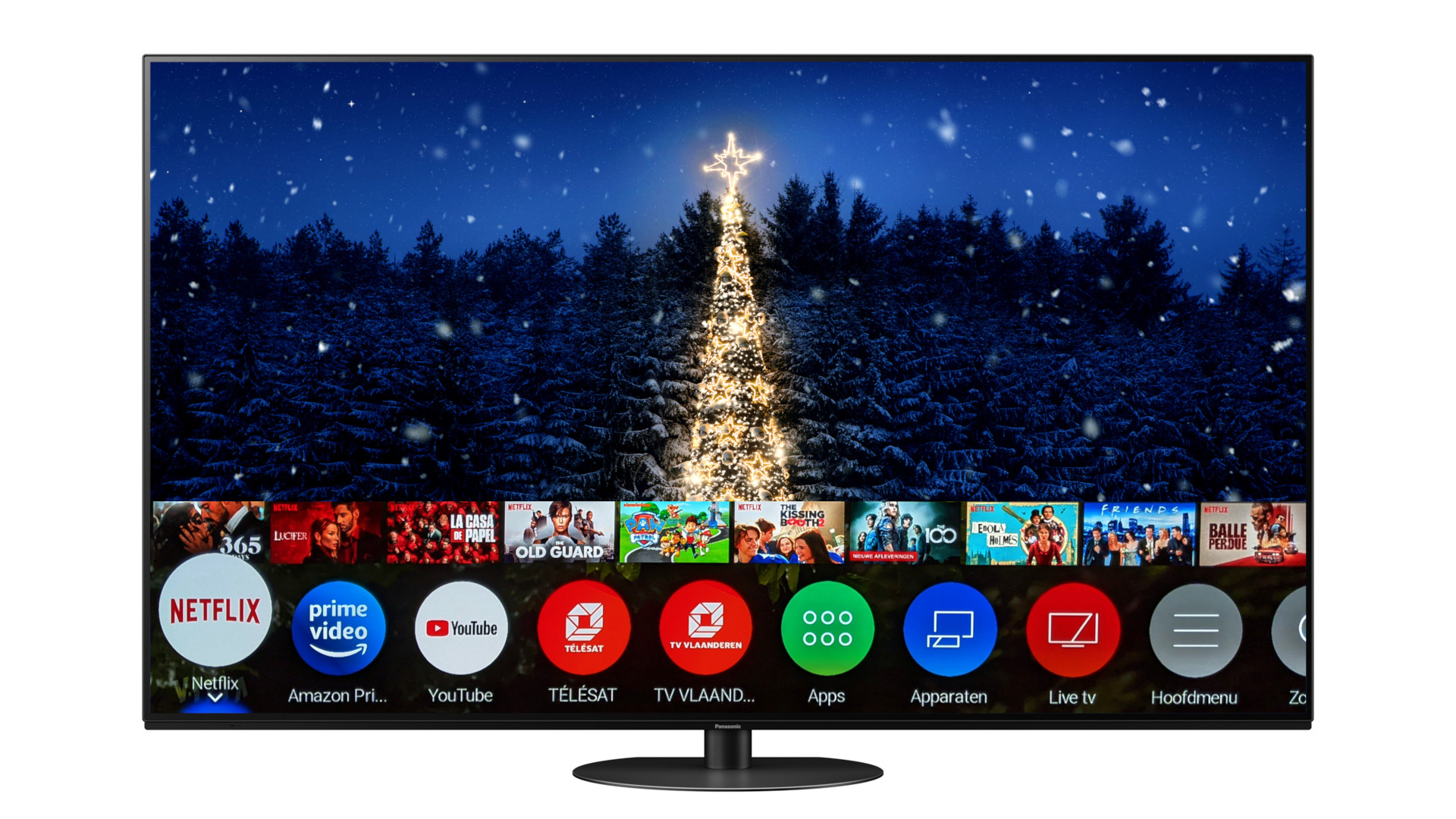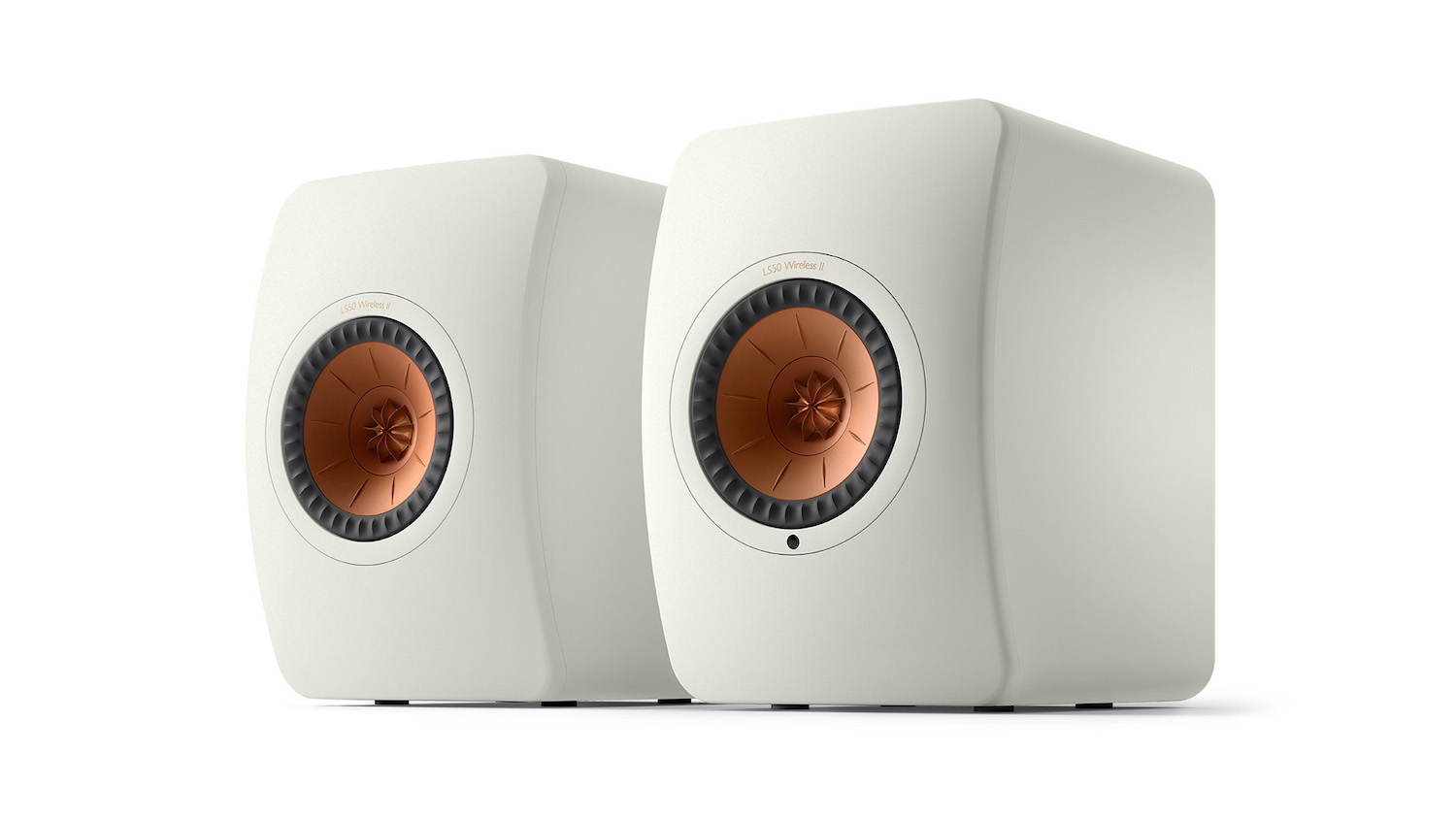Panasonic offers four OLED models , and that arouses our curiosity. We check what you get with the entry-level model. Extensive HDR support, top image processor, that looks fine. But we also look at what you just don’t get. Because there is no doubt that there are certain compromises against a lower price.
Beautifully finished This Panasonic design looks very solid and excellently finished. No unnecessary frills, and with its neutral, black appearance, it fits effortlessly into most interiors.
In profile, it may look a bit blocky, mainly due to the angular finish of the rear module. But in practice, it is barely, if at all, thicker than many other OLED TVs. The super slim screen, and the fine, dark frame still stand out as the true hallmark of a premium TV.
The sturdy base uses a round, of course also black, base plate. Plus it’s a swivel base, which is an option we like to see, and all too often missing from modern televisions.
Hook Up! Since we have already tested the HZ 2000 and since no HDMI 2.1 connections were found, it is not surprising that this model also has to do with HDMI 2.0 connections. There are four, three in the back and one on the side. All four deliver the maximum HDMI 2.0 bandwidth so you can use Ultra HD HDR in the best quality. Panasonic does offer two HDMI 2.1 features, namely eARC (Enhanced ARC) and ALLM (Auto Low Latency Mode).
In addition, there are three USB connections (one of which is USB 3.0), an optical digital audio output, and a headphone connection that you can switch to a subwoofer output via the menus. The component video input that we found on the HZ 2000 has been replaced by a composite video input, but since that in both cases is a legacy connection of which we advise against the use, we do not see that as a downside.
You get the network via the ethernet connection or built-in WiFi. You use Bluetooth to connect your wireless headphones, gamepad or mouse / keyboard, but you can also use it to transmit the audio from your smartphone to the TV. All connections point to the rear or downwards and therefore do not hinder wall mounting.
The TV has three antenna connections, and a dual DVB-T2 / C / S2 tuner with a double CI + slot. You only need to connect an external USB hard drive and then you can watch TV and record another channel at the same time.
My Home Screen 5.0 My Home Screen, now the fifth iteration of Panasonic’s smart TV interface, provides a beautiful and modern smart TV experience. All your content appears in a bar at the bottom of the screen, you determine which inputs, apps or TV channels appear in it. The bar takes up little screen space and does not disturb your viewing experience.
As soon as you select an app (e.g. YouTube or Netflix) a second bar with recommendations appears. Of course, apps themselves must support that function. My Home Screen works smoothly and conveniently, but keep in mind that some apps are not yet available. We mainly think of Disney + and Apple TV. While Panasonic knows this is important, it was unable to provide a date when the apps will be available.
Remote Control Panasonic has sworn by the same remote control for many years. You can’t call it innovative, but it certainly is. It is relatively large, feels good in the hand and has large, handy keys with clear labels. The â ???? My Appâ ???? You can assign your own button to a favorite app, and Netflix has its own button.
Netflix has its own button and the â ???? My Appâ ???? You can assign the key (bottom left) to your favorite app. The â ???? Pictureâ ???? You can use the button at the top right to quickly change the image mode. Via the menus you determine which image modes appear in that list.
The â ???? Pictureâ ???? key at the top right got the icon of â ???? Filmmaker modeâ ???? (more on that below), but still serves to quickly change image mode. A particularly handy detail is that you can adjust the list of image modes that appears yourself via the menus.
Image quality One thing does not seem to be spared: image processing. This model is equipped with the same processor as the top model, the HZ 2000. The results are therefore excellent. As on the HZ 2000 you will enjoy excellent upscaling that creates a soft, pleasantly detailed image. Dark scenes come into their own, with many shadows and visible detail. The noise reduction works well away from random noise and MPEG noise (blocking). And this model also delivers very nice results even with low quality dark images, without annoying flicker and with minimal color bands in soft transitions.
Yet there is one part of image processing where this model clearly sacrifices, namely motion sharpness. Where the other Panasonic OLED models are equipped with Smooth Motion Drive Pro, this one has to make do with Smooth Motion Drive. Every form of Black Frame Insertion has disappeared. And we notice that difference quite well. With fast moving images, significantly less detail is visible than on the HZ 2000. An object racing across the screen has a clearly visible double border. You can still use Intelligent Frame Creation to smooth pan images, but none of the modes helped to bring back the lost detail.
The â ???? Master HDR OLEDâ? ??? panel is reserved for the higher models, this TV has to make do with an ordinary OLED panel. However, this does not have a very heavy impact except for a slightly lower maximum brightness. Uniformity was excellent.
For the best picture, switch to the â ???? True Cinemaâ ???? or â ???? Filmmaker Modeâ ???? image preset. The latter guarantees that all unnecessary image processing is switched off so that you really see what the director wanted. The difference with ‘True Cinema’ however, is virtually non-existent. Both modes are relatively dark, but you can adjust that. Keep the light sensor activated, thanks to Panasonic Intelligent Sensing, the TV adjusts the image based on the ambient light, without changing the mood of the image. The Panasonic calibration is exemplary, and in this area you actually do not compromise on the more expensive models.
Those looking forward to a fantastic HDR experience will not be disappointed. This Panasonic supports all major formats: HDR 10, HLG, Dolby Vision One HDR 10 +. Yes, the OLED panel records slightly lower peak brightness (690 nits on a 10% window), but the results are still in line with the typical OLED performance. Here you can see the difference with the HZ 2000 which 1008 nits scored. The color range is pretty much the same (96% DCI-P3). Panasonic also provides excellent tone mapping, so that HDR footage retains maximum white detail and contrast. The images remain a feast for the eye.
Incidentally, this model is also equipped with Dolby Vision IQ, the Dolby Vision technology that takes ambient light into account to optimize the image. Intelligent Sensing provides a similar effect for the other HDR formats.
Sound Quality Also sound quality you have to compromise on. The device has 2x 15 W, which is sufficient for beautiful sound , but not for a powerful music experience or an immersive movie soundtrack.
We especially notice that the low tones are too short. Especially when you turn up the volume, you hear the TV intervening and certain frequencies are almost squeezed to prevent overdriving. Dialogues remain crystal clear and clear. The device also supports Dolby Atmos, but of course its impact is limited.
Although the result is certainly sufficient for your daily portion of television, we think that anyone who attaches great importance to audio will probably quickly turn to an external solution. Fortunately, there is enough space at the bottom of the screen to place a soundbar.
Conclusion The Panasonic TX – 55 HZW 984 (NL) / TX – 55 HZ 980 (BE) can boast of a lot of technology that you also find in their higher models. The image quality is therefore excellent, but it clearly gives up ground in terms of motion sharpness. That is a downside for fans of action movies and sports. Without HDMI 2.1 connections, it is also not the best choice for gamers. The excellently calibrated color reproduction, ample HDR support and deep OLED contrast remain enormous advantages that provide a lot of viewing pleasure. Given the competition, we saw the price a little lower.
Panasonic TX – 55 HZW 984 (NL) / TX – 55 HZ 980 (BE) Â
â ?? ¬ 1. 799 | www.panasonic.nl / www.panasonic.be
Rating: 4/5

